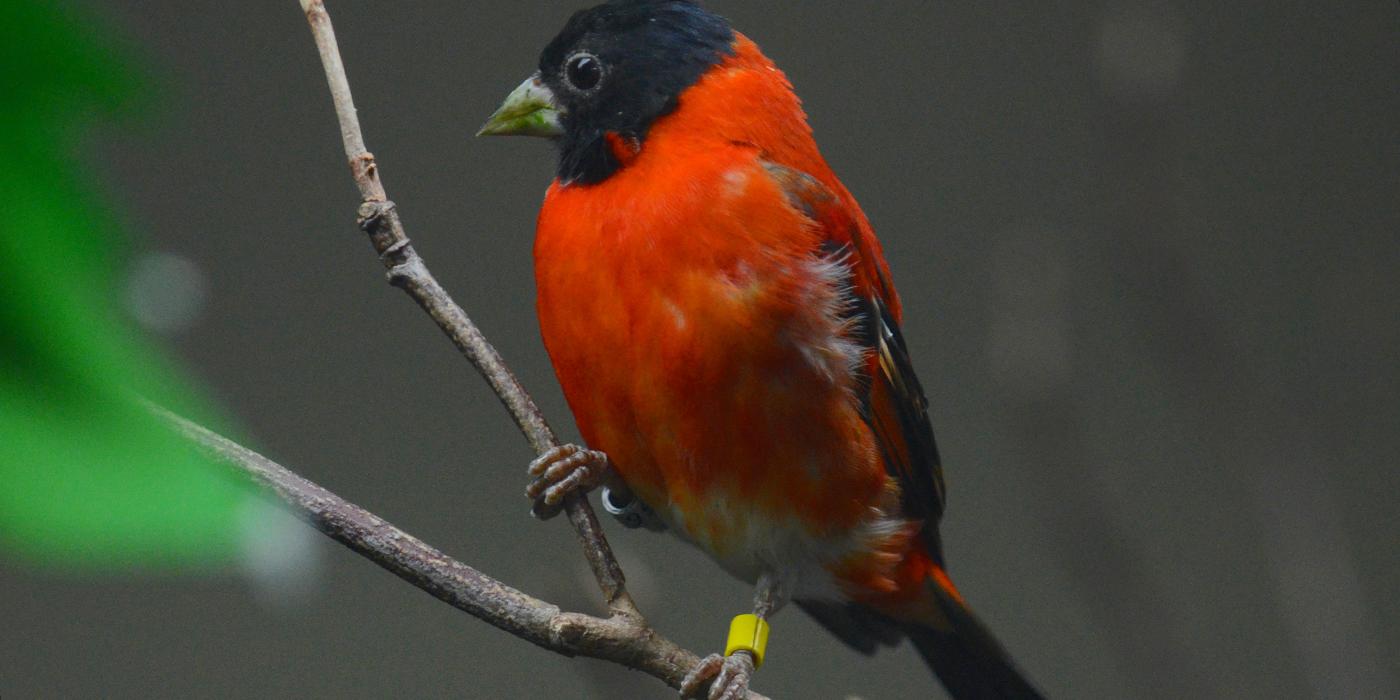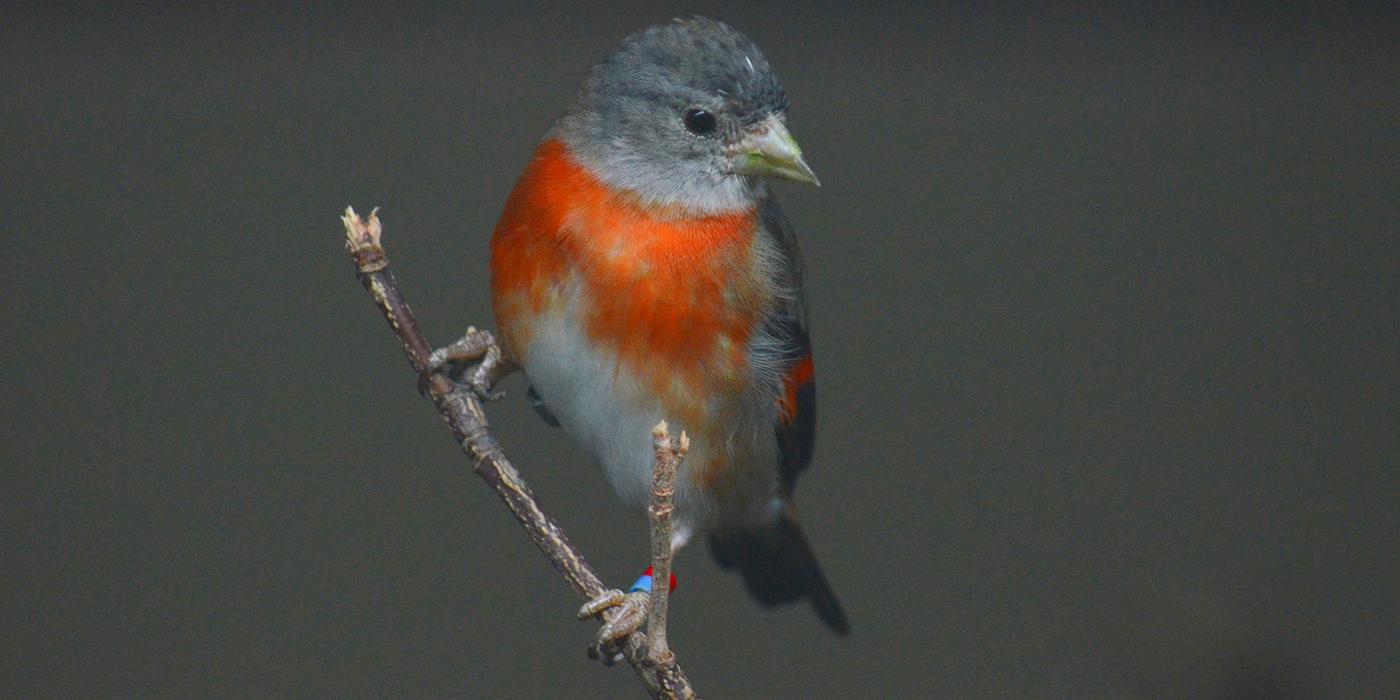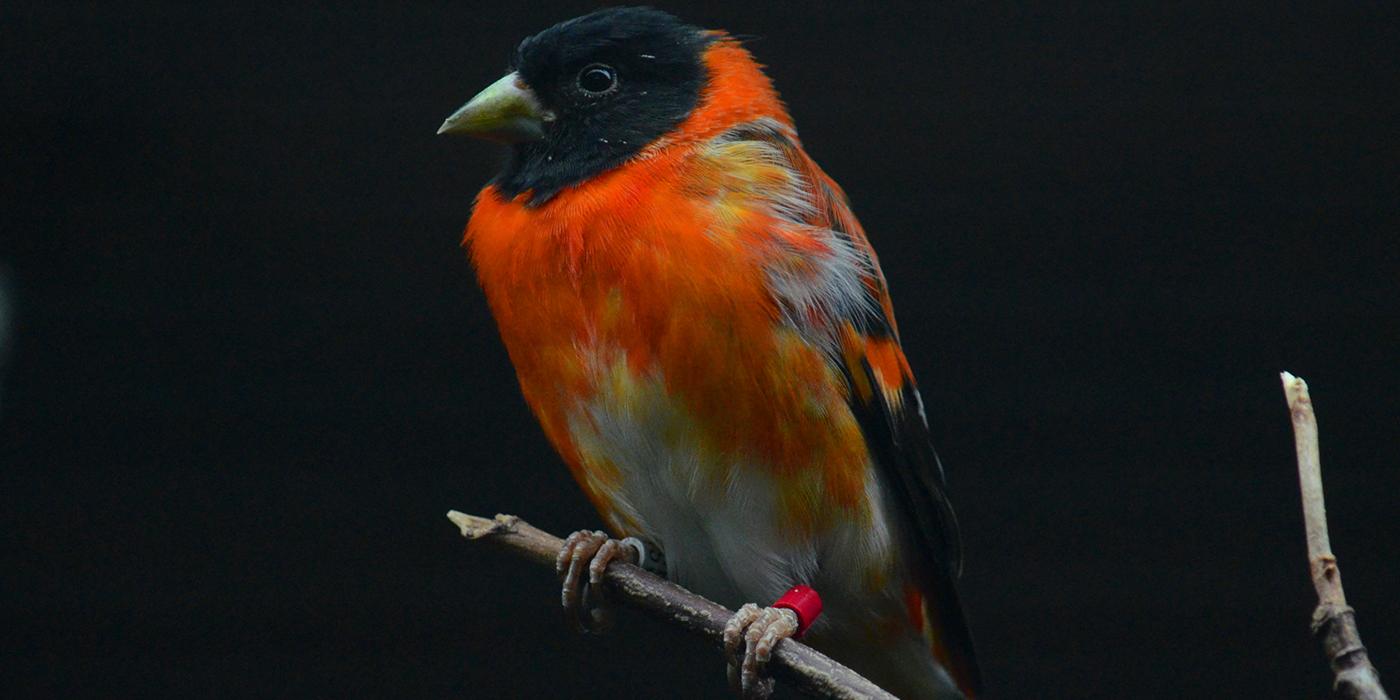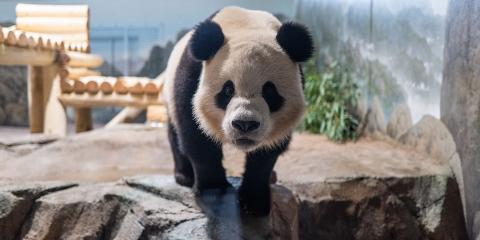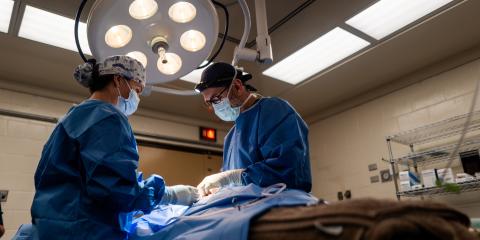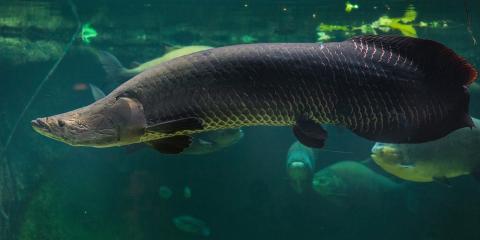The red siskin is a small, vibrantly colored, red and black finch. Though once common throughout the foothills of northern Venezuela, sightings of this vibrantly colored bird are now extremely rare as its population has drastically declined.
Physical Description
The red siskin is a small, red-and-black finch. The male has deep, rich vermilion (red) plumage on its breast, belly and undertail coverts. Red also appears on the rump, uppertail coverts, wing bars and back of the neck where it blends to gray on the back. The head, chin, throat, flight feathers and tail are black.
In contrast, the adult female red siskin is much duller in color. It holds similar markings to the male, with the exception of the black hood. Red coloring on the female only appears on the upper portion of the breast and is faded on the wing bar, rump and sometimes the undertail coverts.
Juvenile red siskins are gray and begin to molt their plumage at 3 to 4 months. As the birds age, the red color deepens.
Size
Native Habitat
Red Siskins use a variety of habitats in the foothills of northern Venezuela, including tropical wet mountain forests, deciduous forests and spiny scrub forest-savanna ecotone. It appears to prefer open, relatively dry forests between elevations of 400 to 1400 meters (1312 to 4593 feet) and migrates according to seasonal precipitation.
The range of the red siskin has become severely fragmented in much of its historic range. Today, only a few isolated colonies remain, with a total population that may number just several hundred individuals.
Recent red siskin sightings have been restricted to just four states in Venezuela, compared to 15 in the past. A small population of the red siskin persists in neighboring north Colombia, and there is a population in Puerto Rico derived from escaped caged birds, although sightings have recently become rare.
In 2000, a new population was discovered in southwest Guyana, which has resulted in a revision of the bird's overall population size. It is considered nationally critically endangered in Venezuela.
Lifespan
In the wild, the average lifespan for a red siskin is 4.2 years. In a human-managed population, red siskins are some of the hardiest birds and have a life expectancy of up to 8 years.
Food/Eating Habits
The diet of the red siskin consists of fruit, flower buds, grass seeds and herbaceous plants. In human care, they eat a seed mix made up of finch seed mix, canary seed mix and thistle seeds. They also receive a commercial pellet diet, as well as various types of lettuce.
Reproduction and Development
The red siskin is a seasonal breeder, with the main reproductive period occurring between April and early June, and a secondary period between Nov. and Dec. The nests of this species are cup shaped and are usually placed high in clusters of tall trees. Generally, three to four eggs are laid per clutch, and these take 12 to 14 days to hatch. The newly hatched chicks are relatively small, and the female provides all of the food. The chicks become fully feathered 12 days after they hatch.
Conservation Efforts
Classified as endangered by IUCN since 1952, red siskins are also listed in the U.S. Endangered Species Act and CITES Appendix I. Two human activities in particular, tracking and habitat destruction, have brought red siskins close to extinction. People have trapped these birds for many decades because of their red plumage.
In the early twentieth century, it was fashionable to use the feathers, and sometimes even the whole bird, as a decoration for women’s hats and other clothing articles. Red Siskins were also deliberately hybridized with domestic canaries to create a “red factor” variety of canary.
This avicultural practice became very popular in the early twentieth century and was the main cause of the dramatic decline of this species. Most birds died in transit across the ocean. Traffickers made sure to only provide males, not females, so they could not be propagated in captivity, thus preserving their market for wild caught birds. Illegal trapping and trade of Red Siskins remains the primary threat to the survival of this species.
Habitat for the Red Siskin has also been lost in Venezuela because it likes to live where people like to live; in tropical deciduous forest, in the foothills near the Andes and the coastal mountains. Part of the habitat needed by Red Siskins has been degraded or transformed for logging, agriculture, human settlements and other activities. Field research suggests that Red Siskins can tolerate a variety of human activities and remaining habitat might be able to support much larger populations.
If Red Siskin populations continue to decline, inbreeding and loss of genetic diversity could become additional threats in the wild. Inbreeding can reduce disease resistance and fertility, and loss of genetic diversity reduces the species’ ability to adapt to change.
The red siskin, which features prominently in Venezuela’s national identity, is considered one of the most endangered bird species in the world. In 2000, a previously unknown population of red siskins was discovered in southern Guyana during biodiversity surveys led by Smithsonian and University of Kansas researchers.
Red Siskins at the Smithsonian Conservation Biology Institute
Since 2015, animal care staff at SCBI have been developing best practices in animal husbandry unique to this species to determine the right diet and nesting material, how best to breed the birds, house them, weigh them, care for their young and even how to train them to be wild.
Historically, there has been limited understanding about red siskins’ nutritional needs in the wild, so the animal care team is analyzing how different combinations and amounts of food items affects the birds’ plumage coloring, weight and reproductive success.
SCBI’s genetic research helps to understand differences between populations, preserve the genetic purity of the species and assess the genetic health of remaining wild populations. The current priority is to complete whole genome sequencing of red siskins and other species with which they are known to hybridize.
In addition to providing best practices in husbandry protocols based on research with the colony, SCBI’s animal care team is helping to develop a studbook and integrating innovative molecular tools to manage the genetic diversity of the birds under human care. SCBI will also play a pivotal role in developing a strategic plan for reintroducing the bird to the wild.
The Red Siskin Initiative
The Red Siskin Initiative is an international partnership of public and private institutions that aims to protect the population in Guyana and restore sustainable populations in Venezuela through reintroduction.
The Smithsonian’s participation is significant, hosting the project coordinator position and drawing on expertise from Smithsonian scientists at the National Zoo, Conservation Biology Institute, Migratory Bird Center, Tropical Research Institute and National Museum of Natural History.
The Red Siskin Initiative aims to help protect this stable population through community-based conservation, in addition to restoring sustainable populations in Venezuela. The project approaches conservation of the species comprehensively: using genomic and ancient DNA techniques for genetic monitoring and management, studying ecology and natural history in the field, identifying appropriate release sites, mitigating wildlife trafficking, and protecting and expanding habitat, which includes shade coffee farms certified as bird friendly through the Smithsonian Migratory Bird Center.
With this knowledge, SCBI will provide scientific support for conservation breeding programs at two Venezuelan zoos—Parque Zoológico y Botánico Bararida in Barquisimeto and Parque Zoológico El Pinar in Caracas—that are working on a program to breed large numbers of birds for reintroduction in the wild
Help this Species
- Be a smart consumer. Choose products made with sustainable ingredients, such as Smithsonian certified Bird Friendly coffees, which support farmers striving to limit their impact on wildlife and habitat.
- Practice ecotourism by being an advocate for the environment when you’re on vacation. During your travels, support, visit or volunteer with organizations that protect wildlife. Shop smart too! Avoid buying products made from animals, which could support poaching and the illegal wildlife trade.
- Support organizations like the Smithsonian’s National Zoo and Conservation Biology Institute that research better ways to protect and care for this animal and other endangered species. Consider donating your time, money or goods.
- Share the story of this animal with others. Simply raising awareness about this species can contribute to its overall protection.
